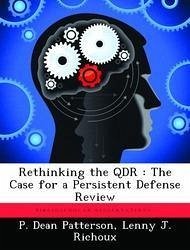The fourth DoD Quadrennial Defense Review (QDR) will be submitted to Congress in February 2009. A relatively new instrument, the QDR requires the U.S. military establishment to re-examine long-range strategy and adjust the strategic, programmatic, and budgetary vectors of the Department. The espoused purpose of the QDR is to survey future national security threats and develop dissuasive strategies. Because strategies eventually lead to programs and budgets, some say that changes to the defense budget are the most important and visible outcomes of the QDR. While the Pentagon's Planning, Programming, Budgeting, and Execution, or PPBE, system has continuously operated (in one form or another) since the 1960s, the QDR is a relatively recent innovation--with the first report completed in 1997. Since then it has been used by new Presidents to mold DoD initiatives and direction at the outset of their administrations. Making such Presidential input stick over a four-year term, however, remains a political challenge. While the ongoing PPBE process has served DoD well, the QDR's record is less solid. Having interviewed several experts with extensive high-level QDR experience, the authors found three popular recommendations on the future of the QDR: abandon the QDR; enlarge the QDR to include the inter-agency; or create a persistent QDR that works along-side the existing PPBE process. An inter-agency QDR expansion is introduced as an important option, but one that will need a longer time horizon to fully implement. This paper will examine past QDRs and recommend DoD adopt a persistent QDR, or PQDR, in the future.
Hinweis: Dieser Artikel kann nur an eine deutsche Lieferadresse ausgeliefert werden.
Hinweis: Dieser Artikel kann nur an eine deutsche Lieferadresse ausgeliefert werden.








